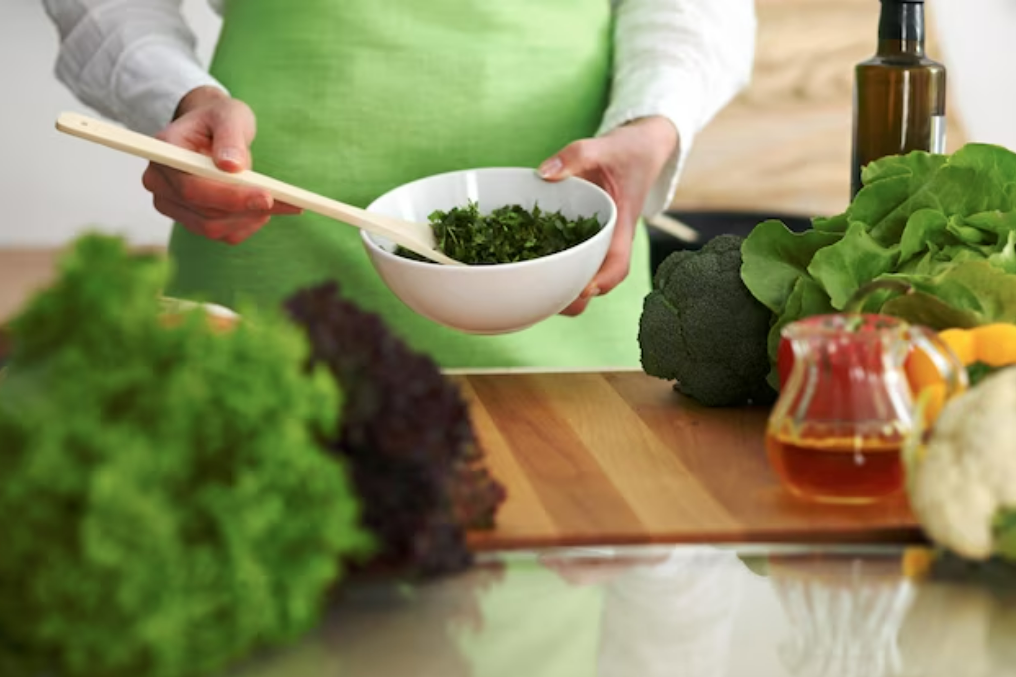When it comes to managing pain, you might be looking for alternatives to over-the-counter medications. There are several natural strategies you can incorporate into your routine that not only target pain relief but also promote overall well-being. From dietary changes to mindfulness practices, these approaches can offer a holistic way to feel better. Curious about what these strategies entail and how they can fit into your life? Let's explore the top seven methods that could change the way you approach pain management.
Herbal Remedies
When it comes to finding relief from pain, many people turn to herbal remedies as a natural alternative. You might be surprised at how effective these remedies can be for various types of discomfort. Herbs like turmeric and ginger are well-known for their anti-inflammatory properties, making them excellent choices for joint pain and muscle soreness. Incorporating these into your diet or taking them in supplement form could provide you with the relief you're seeking.
Another popular herbal remedy is willow bark, often referred to as nature's aspirin. It contains salicin, which has pain-relieving effects similar to those of over-the-counter medications. If you're struggling with headaches or back pain, consider trying willow bark, but make sure to consult your healthcare provider first.
You might also want to explore peppermint oil, especially for headaches or muscle tension. Applying diluted peppermint oil to the affected area can help soothe discomfort.
For a calming effect, chamomile tea could be just what you need. It's not only relaxing but also has mild analgesic properties that can ease pain from stress or tension.
Don't forget about the power of lavender, either. Known for its calming scent, lavender oil can help reduce pain associated with anxiety and promote better sleep, which is essential for healing.
Experimenting with these herbal remedies can lead you to a natural, effective pain relief strategy that works best for you. Just be sure to listen to your body and consult with professionals when necessary.
Dietary Changes
Making dietary changes can greatly impact your pain levels and overall well-being. When you focus on incorporating anti-inflammatory foods into your diet, you can help reduce pain naturally. Start by adding more fruits and vegetables, especially dark leafy greens, berries, and citrus fruits. These foods are rich in antioxidants, which fight inflammation and promote healing.
Consider incorporating healthy fats like those found in olive oil, avocados, and fatty fish such as salmon or sardines. Omega-3 fatty acids are particularly effective at reducing inflammation.
You might also want to cut back on processed foods, sugary snacks, and refined carbohydrates. These items can exacerbate inflammation and contribute to pain.
Don't forget the importance of hydration. Drinking plenty of water helps maintain your body's balance and can improve your overall energy levels. Herbal teas, such as ginger or turmeric, can provide additional anti-inflammatory benefits.
Lastly, pay attention to food sensitivities. Some people find that certain foods, like dairy or gluten, can trigger pain or discomfort. Keep a food diary to track your intake and any resulting symptoms, which can help you identify any problematic foods.
Mindfulness Techniques
Incorporating mindfulness techniques can complement your dietary changes and enhance your overall pain management strategy. Mindfulness helps you focus on the present moment, allowing you to become more aware of your body and its sensations without judgment. This awareness can play an essential role in how you perceive and cope with pain.
One effective mindfulness practice is meditation. Set aside a few minutes each day to sit quietly, close your eyes, and concentrate on your breath. Notice how the air feels as it enters and exits your body. When thoughts about pain arise, acknowledge them without resistance, then gently bring your focus back to your breath. Over time, this practice can help you develop a healthier relationship with your pain.
Another technique is mindful movement, such as yoga or tai chi. These practices encourage gentle stretching and awareness of your body's movements, promoting relaxation and reducing tension. As you flow through the poses, pay attention to how each movement feels, allowing yourself to connect with your body on a deeper level.
Additionally, consider incorporating mindful eating into your routine. Savor each bite, focusing on the flavors and textures of your food. This not only enhances your connection to your meals but can also improve digestion and overall well-being.
Physical Therapies
Physical therapies can provide effective relief for pain by targeting the underlying issues in your body. Whether you're dealing with chronic pain, recovering from an injury, or managing an acute condition, physical therapy can help you regain function and improve your quality of life. Techniques like manual therapy, exercise therapy, and modalities such as heat and ice can be tailored to your specific needs.
When you engage with a physical therapist, they'll assess your condition and design a personalized treatment plan. You'll likely start with exercises that enhance strength, flexibility, and range of motion. These activities not only alleviate pain but also work to prevent future injuries.
Additionally, your therapist may use hands-on techniques to manipulate and mobilize your joints and soft tissues, which can greatly reduce pain and stiffness.
Another important aspect of physical therapy is education. Your therapist will teach you about your body and how to manage pain through posture, movement patterns, and ergonomic strategies. This knowledge empowers you to take control of your healing process.
Moreover, regular sessions can foster accountability and motivation, helping you stay committed to your recovery. You'll often notice improvements in your overall well-being, as physical therapies encourage a more active lifestyle and better physical function.
Don't hesitate to explore these options, as they can be a key component in your journey toward natural pain relief.
Essential Oils
Aromatherapy offers a natural way to alleviate pain and promote relaxation through the use of essential oils. These concentrated plant extracts can target various types of pain, from headaches to muscle aches. When you inhale or apply essential oils, you're tapping into their therapeutic properties, which can greatly enhance your well-being.
One of the most popular essential oils for pain relief is lavender. Its calming scent not only helps reduce stress but also has anti-inflammatory properties that can ease aches. You can diffuse lavender in your space or dilute it with a carrier oil and apply it directly to sore areas.
Similarly, peppermint oil is another excellent choice, known for its cooling sensation that can relieve tension headaches and muscle soreness. Just a few drops mixed with a carrier oil can create a soothing balm.
If you're dealing with joint pain, consider using eucalyptus oil. It has analgesic properties that help reduce inflammation. When combined with a warm compress, it can provide substantial relief.
For menstrual pain, clary sage oil can be particularly beneficial, as its soothing properties may help reduce cramps.
To get started, always do a patch test to verify you don't have any allergic reactions. You might also want to consult a healthcare professional before incorporating essential oils into your pain management routine.
With the right oils and application methods, you can harness the power of nature to find relief and promote relaxation effectively.
Acupuncture
Acupuncture has a rich history that dates back thousands of years and offers a unique approach to pain relief.
By inserting thin needles into specific points on your body, it aims to balance energy flow and promote healing.
While many people experience significant benefits, it's also important to contemplate the potential risks involved.
History of Acupuncture
You might find it fascinating that acupuncture's principles, including meridians and points, have remained consistent throughout the centuries.
Despite modern advances, the core philosophies of balance and harmony in healthcare continue to resonate.
Today, millions rely on acupuncture for pain relief and overall wellness, proving the enduring legacy of these ancient techniques.
Embracing this history can deepen your appreciation for acupuncture as an effective natural pain relief strategy.
How It Works
Understanding how acupuncture works can enhance your appreciation for its effectiveness as a natural pain relief strategy. At its core, acupuncture involves the insertion of fine needles into specific points on your body. These points correspond to pathways, or meridians, through which your body's energy, known as "qi," flows. By stimulating these points, acupuncture aims to balance the flow of energy, promoting your body's innate healing abilities.
When you receive acupuncture, the needles trigger your nervous system to release endorphins and other neurotransmitters. These chemicals can alleviate pain and create a sense of well-being. Additionally, acupuncture may improve blood circulation, reducing inflammation and enhancing the healing process in affected areas.
You might also notice changes in your body's response to pain. As the treatment progresses, your brain learns to modify its perception of discomfort, which can lead to long-lasting relief.
The experience varies among individuals, but many find that regular sessions contribute to an overall sense of balance and relaxation. Understanding these mechanisms gives you insight into why acupuncture is a valuable option for managing pain naturally.
Benefits and Risks
Exploring the benefits and risks of acupuncture reveals a nuanced approach to pain management. One of the primary benefits you'll experience is pain relief. Many people find that acupuncture effectively reduces chronic pain, including headaches, back pain, and arthritis.
It can also promote relaxation, helping to alleviate stress and anxiety, which can further enhance your overall well-being.
However, it's important to take into account the risks involved. While acupuncture is generally safe when performed by qualified practitioners, you might encounter side effects, such as soreness or bruising at needle sites.
In rare cases, improper technique can lead to more severe complications. Additionally, it's crucial to disclose any medical conditions or medications you're on, as acupuncture mightn't be suitable for everyone.
Ultimately, acupuncture can be a valuable tool in your pain relief arsenal, but it's important to evaluate the benefits against the risks. Consulting with a healthcare professional can help you determine if acupuncture aligns with your health goals.
Hot and Cold Therapy
Hot and cold therapy can be powerful tools in your pain relief arsenal.
Applying heat can soothe stiff muscles and increase blood flow, while cold therapy helps reduce inflammation and numb sharp pain.
Understanding how to use both techniques effectively can make a real difference in your comfort.
Benefits of Heat Application
Heat application, whether through hot or cold therapy, often provides significant relief from pain and discomfort. When you apply heat, it helps to increase blood flow to the affected area, promoting healing and relaxation. This can be especially beneficial for muscle stiffness or tension, as warmth soothes tight muscles and eases discomfort.
Using heat can also help reduce inflammation, making it an excellent choice for chronic pain conditions. For instance, if you're dealing with arthritis or lower back pain, a warm compress or heating pad can work wonders. You'll find that the gentle warmth penetrates deep into your tissues, alleviating pain and enhancing mobility.
Additionally, heat application can stimulate the production of endorphins, your body's natural pain relievers. This not only helps in managing pain but can also improve your overall mood.
Remember to use heat therapy safely. Always place a barrier, like a towel, between your skin and the heat source to avoid burns.
Generally, applying heat for 15 to 20 minutes can provide effective relief, so give it a try and see how it helps you feel more comfortable.
Cold Therapy Techniques
While heat therapy offers soothing relief, cold therapy can be just as effective for managing pain and inflammation. When you apply cold, it constricts blood vessels, reducing swelling and numbing sharp pain. This makes it an excellent option for acute injuries, like sprains or strains.
To use cold therapy, you can grab an ice pack, a bag of frozen peas, or even a cold towel. Just remember to wrap the ice pack in a thin cloth to protect your skin from frostbite. Apply it to the affected area for about 15 to 20 minutes at a time, allowing your skin to return to normal temperature between sessions.
You can also try contrast therapy, alternating between hot and cold treatments. Start with cold for 20 minutes, then switch to heat for another 20. This method can stimulate blood flow and promote healing.
If you're dealing with chronic pain, consider using cold therapy regularly to manage flare-ups. Whether it's a headache or joint pain, cold therapy is a simple, effective tool in your pain relief arsenal.
Just listen to your body and adjust the technique as needed for the best results.
Conclusion
Incorporating these seven natural pain relief strategies can transform your approach to managing discomfort. By embracing herbal remedies, dietary changes, and mindfulness techniques, you can empower yourself to find relief. Don't underestimate the benefits of physical therapies, essential oils, acupuncture, and hot and cold treatments. With a little effort and experimentation, you'll discover what works best for you. Start today and take control of your pain the natural way—your body will thank you!



